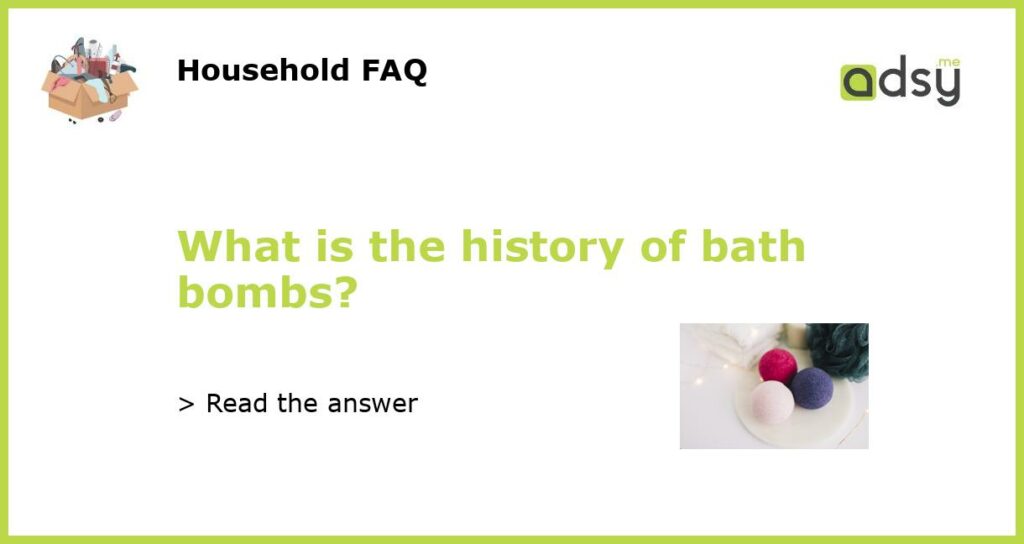The Origins of Bath Bombs
The creation of bath bombs can be traced back to the 1800s. During this time, people would add a variety of ingredients to their bathwater, including oils, salts, and minerals. Later on, in the 1900s, the use of bath salts became popular, providing not only relaxing scents but also therapeutic benefits.
The Birth of the Bath Bomb
The first modern-day bath bomb was created by Mo Constantine, one of the co-founders of Lush Cosmetics, in the mid-1980s. Constantine developed a combination of essential oils, citric acid, and sodium bicarbonate, which, when added to bathwater, fizzes and releases soothing scents and moisturizing oils.
Rise in Popularity
Lush Cosmetics introduced bath bombs to the market in the late 1980s, leading to its rapid rise in popularity in the cosmetic industry. The fun, fizzy bathtub addition quickly became a favorite among consumers looking for a luxurious and relaxing bath experience. Soon after, competitors began to produce their own versions of bath bombs, introducing different shapes, scents, and colors to the market.
A Growing Trend
In recent years, bath bombs have exploded in popularity, becoming a staple in the beauty routines of people around the world. With a growing interest in self-care, consumers are looking for ways to pamper themselves, with bath bombs offering a luxurious and affordable option. The rise of social media has also contributed to the trend, with influencers sharing their love of bath bombs on platforms such as Instagram and TikTok.
The Future of Bath Bombs
The market for bath bombs shows no signs of slowing down, with manufacturers continuing to innovate with new shapes, scents, and features. There has also been a growing interest in eco-friendly and sustainable bath bombs, with many producers moving towards more environmentally-friendly options. This trend towards sustainability is likely to gain more momentum in the coming years, as consumers become more conscious of their impact on the environment.






